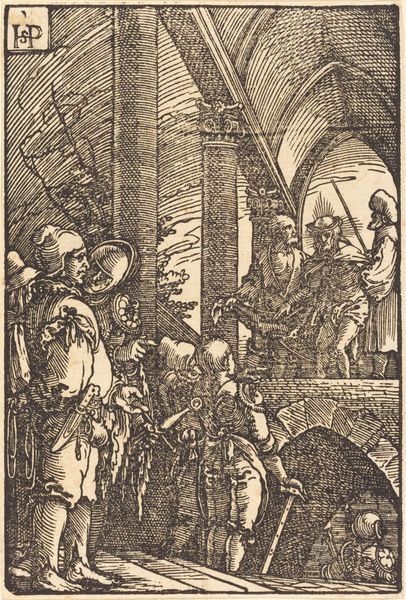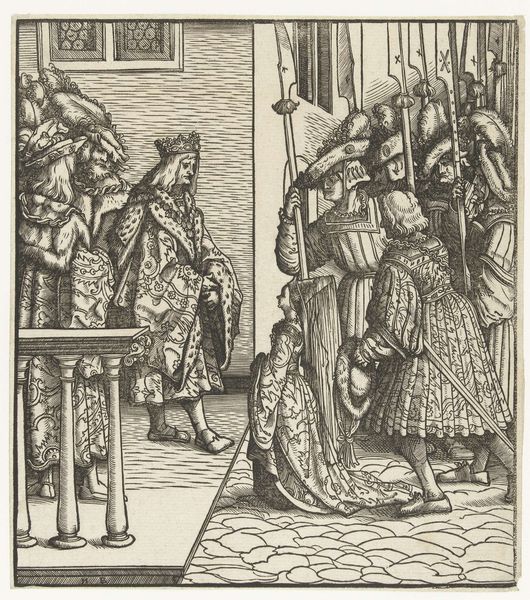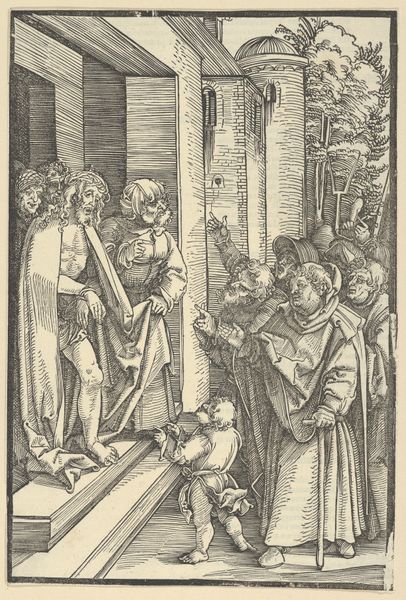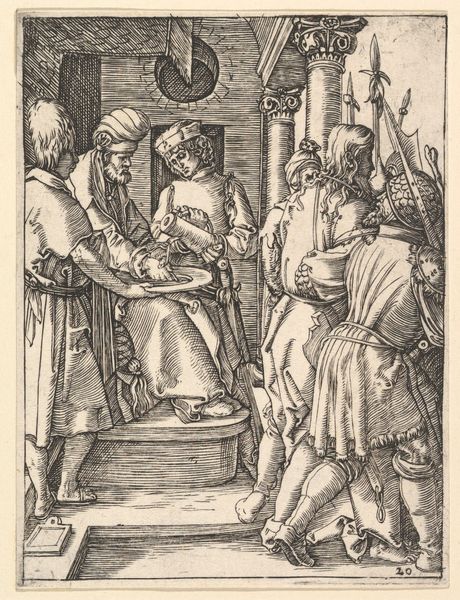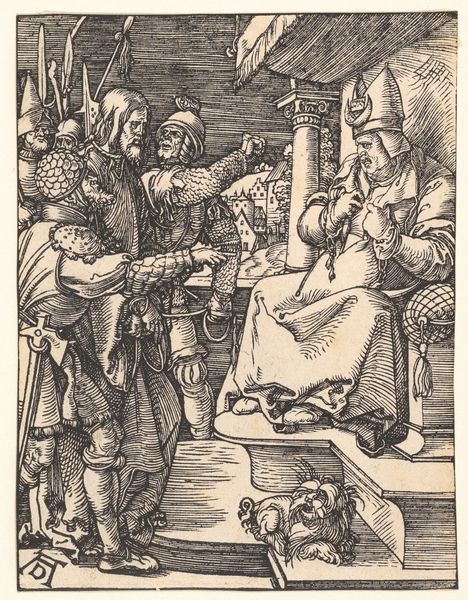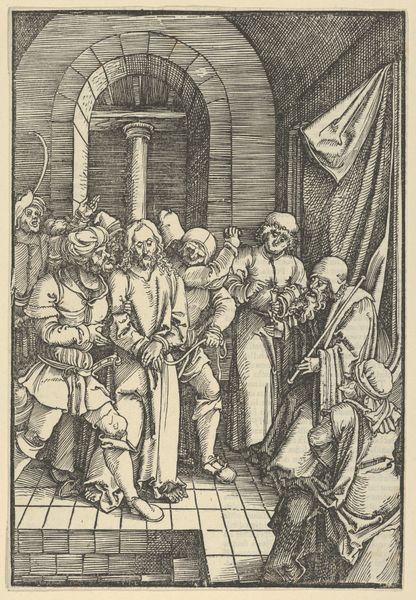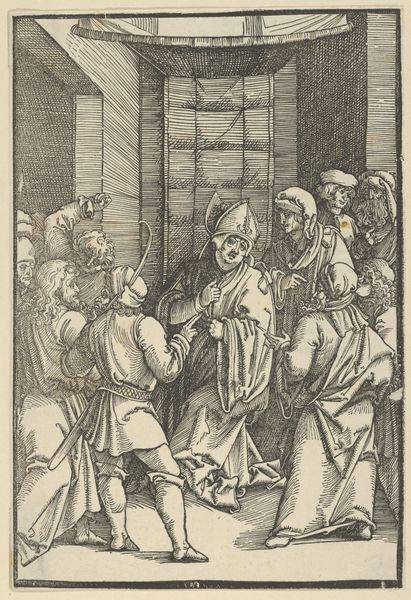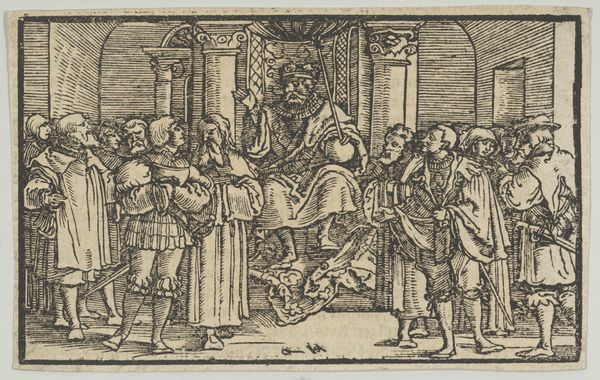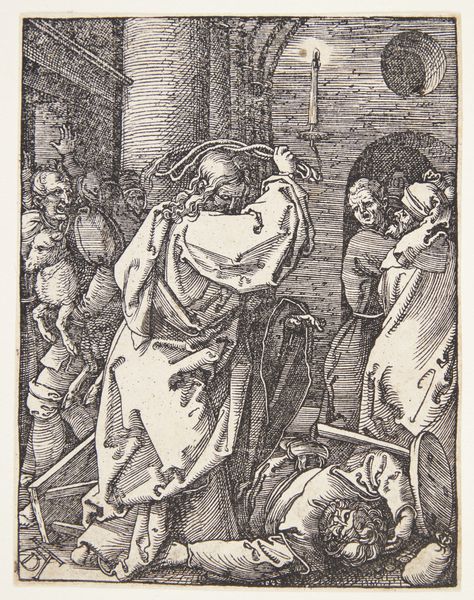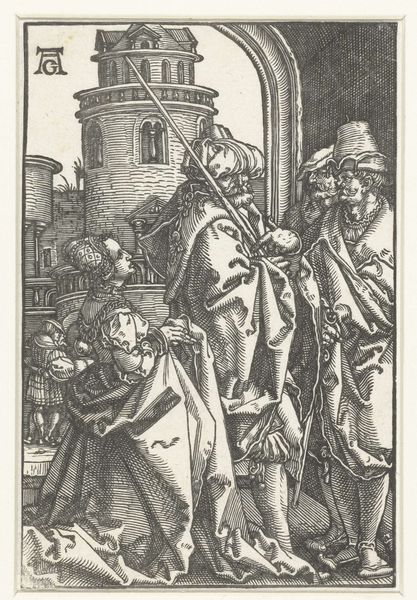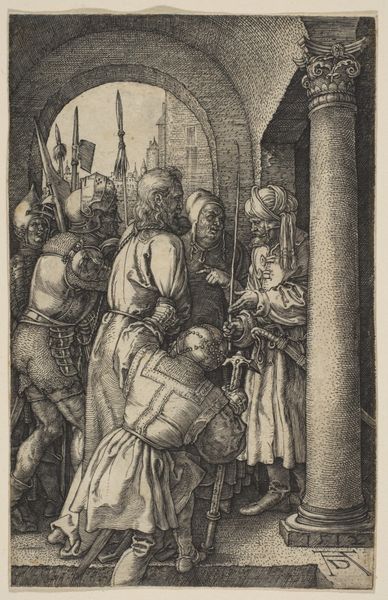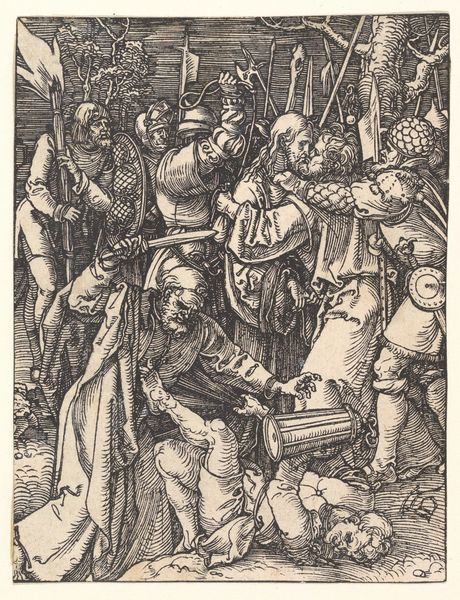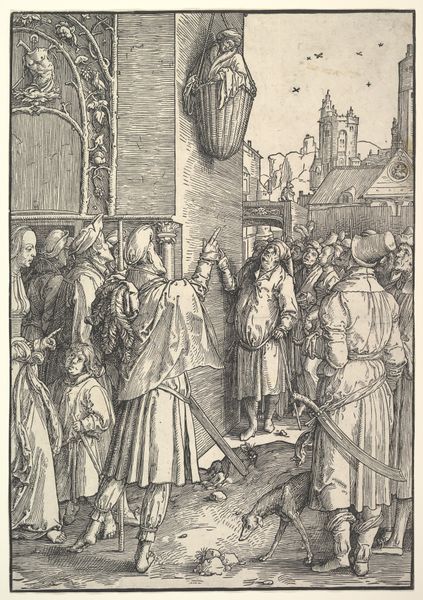
drawing, print, engraving
#
drawing
# print
#
figuration
#
history-painting
#
northern-renaissance
#
engraving
Copyright: National Gallery of Art: CC0 1.0
Editor: This is Sebald Beham's "Christ before Caiaphas," an engraving from 1535. There's such a compressed intensity here, a real feeling of antagonism. What do you see in this piece, in terms of its cultural context? Curator: Well, beyond the immediately visible drama of the biblical scene, I see an important document reflecting the religious and social tensions of the Reformation era. Beham, aligned with the radical Reformers, often used prints like this one as vehicles for social commentary. Consider the exaggerated, almost grotesque features he gives to Caiaphas and the other figures judging Christ. Editor: So it's not just about the biblical narrative, it's a pointed critique? Curator: Precisely! The visual choices—the cramped composition, the stark contrasts—serve to condemn the authority figures of the time. Think about how prints circulated in the 16th century. They were a form of mass media, enabling these ideas to spread rapidly, influencing public opinion, and often landing artists like Beham in trouble with the authorities. It invites us to ask: who has the power to judge, and by what right? Editor: That's fascinating! So this engraving was a fairly provocative act? Curator: Absolutely. And it's important to consider the patronage of art at this time, how political climates affected the imagery and style. These works served as both religious art and covert political messages. Editor: I never thought about prints as a form of rebellious expression. I will view prints of this period in a different light from now on! Curator: Indeed, hopefully this helps everyone to view early modern art through the lenses of political and social turbulence of the Reformation!
Comments
No comments
Be the first to comment and join the conversation on the ultimate creative platform.
